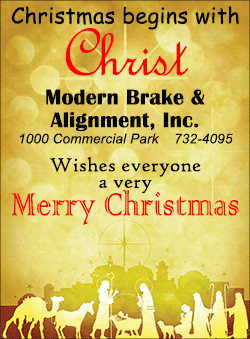|
Take
5: Top offenses and defenses clash in Week 14
 Send a link to a friend
Send a link to a friend
 [December 07, 2018]
Highlighting Week 14's excellent
slate of matchups are the premier offense-defense battles in Chicago
and Kansas City. [December 07, 2018]
Highlighting Week 14's excellent
slate of matchups are the premier offense-defense battles in Chicago
and Kansas City.
Offenses owned these clashes (Rams-Vikings, Jaguars-Chiefs,
Saints-Ravens) early this season, but the pendulum swung back in
Week 13 (Saints-Cowboys, Colts-Jaguars).
Perhaps the Bears can keep that trend going in frigid Chicago on
Sunday night.
1. A formula to slow the Rams?
There's no "blueprint" to stop Sean McVay's offense, but one
particular approach has given it trouble. L.A.'s disjointed
performance in Detroit came against a Lions defense leaning heavily
on Cover-4 (also known as "quarters"), which Denver also employed
when holding the Rams to a season-low 23 points.
With four deep defenders, Cover-4 creates multiple double teams
against two- and three-man route concepts -- like many of McVay's
play-action designs -- by bracketing vertical routes with a
cornerback and a safety. The approach also fits Los Angeles'
condensed formations, keeping defenders from getting picked by
intertwined releases from stacks and bunches.
Vic Fangio's zone-heavy scheme features plenty of Cover-4, often
from disguised looks that muddy the quarterback's read. Safeties
Eddie Jackson and Adrian Amos have thrived in these designs, with
Jackson instinctively reading multiple routes and Amos flying
downhill to hammer crossers or fill run lanes.

Jared Goff hasn't been poor, but his early-season precision -- both
with ball placement and field reading -- has slipped some. (Even
against the Chiefs, he missed several open targets low.) That could
be exacerbated Sunday by Khalil Mack and Akiem Hicks, who should get
push in Goff's face even if they don't reach him often.
2. Chiefs offense losing its balance?
Kansas City still scored 40 points Sunday, but its run game clearly
missed Kareem Hunt. Patrick Mahomes and Tyreek Hill accounted for 89
yards on 11 carries, but Spencer Ware and Damien Williams totaled 85
on 19 totes (4.5 average), with more than half (47 yards) on three
carries.
Ware especially struggled (3.4 average) despite facing the Raiders'
28th-ranked run defense (5.0 average) and a slew of light boxes.
With Oakland keeping two safeties deep, Andy Reid's spread
formations regularly created 5-on-5 or 6-on-6 blocking (even 6-on-5
on one occasion). But Ware lacked the one-step, upfield cuts to
explode through seams, often continuing laterally past gaping holes
up the middle.
The drop-off from Hunt to Ware won't matter often, given the
explosive passing game, but it might when trying to salt away a
playoff lead, or when facing better defenses.
This week, Baltimore's top-ranked unit can key almost entirely on
Mahomes and the passing game, looking to flummox him with myriad
zone blitzes. Those tactics normally give free releases to slot
targets -- a dangerous move against Hill and Travis Kelce -- but the
Ravens could add wrinkles, especially if they don't fear the run
game.
Rather than having Terrell Suggs set the edge, Baltimore could walk
him out over Kelce (wide or in the slot) to slam the tight end at
the snap. The Ravens could even use this "bullseye" tactic against
Hill, disrupting his momentum however possible to keep him from
threatening downfield so quickly.
Mahomes won't be confused like a typical first-year starter, but he
could struggle some if the Chiefs get one-dimensional and his
receivers can't get off the line cleanly.
3. Can Philly's front handle Dallas' D?
Leighton Vander Esch and Jaylon Smith are shining in a scheme that
unleashes their speed. That's certainly true in coverage, with Rod
Marinelli's bevy of zones, but it's also clear against the run.
A D-line guru, Marinelli has long favored an aggressive approach
with slants and stunts, and the Cowboys have the penetrators to run
them. Rather than passively holding gaps, Dallas calls slants on run
downs, forcing offensive lines to react quickly and in unison. The
unpredictability can create chaos and prevent O-lines from executing
double teams as planned.
When double teams go awry, Vander Esch and Smith remain unblocked,
allowing them to sift through traffic to the ball carrier. O-linemen
that do get to the second level have had their paths altered,
offering more favorable angles to slip blocks, at which Vander Esch
is particularly adept.
[to top of second column] |

Detroit Lions running back LeGarrette Blount (29) runs the ball
during the fourth quarter against the Los Angeles Rams at Ford
Field. Mandatory Credit: Raj Mehta-USA TODAY Sports

Underwhelming most of the year, Philly's front five got rolling
Monday night, taking it to a stout Washington front-seven (4.6 yards
per carry, excluding kneeldowns), but Dallas is a different
challenge.
Perhaps the Eagles could combat the Cowboys' aggression by dusting
off some of offensive line coach and run-game coordinator Jeff
Stoutland's more exotic designs. Stoutland broke out several
uncommon concepts in Dallas last year, many featuring split-flow
action to move linebackers one way while attacking another.
4. Colts-Texans sequel nothing like the original
It feels like 10 months, not 10 weeks, since Houston's 37-34
overtime victory in Indianapolis, which started an eight-game win
streak.
After averaging 38.4 attempts through five weeks, Deshaun Watson has
averaged 24.6 since. The Texans have instead leaned heavily on the
run, using the O-line's athleticism in outside zone and power
schemes with pulling tackles (rather than guards). Lamar Miller and
Alfred Blue aren't dynamic creators, but both are disciplined
hitting the designed hole, which has been there of late.
Meanwhile, the Colts' O-line looks brand new. In Week 4, J.J. Watt
feasted (two strip-sacks) on Le'Raven Clark and Denzelle Good.
Anthony Castonzo's return sent Clark back to the bench, and rookie
Braden Smith has shored up right tackle (Good was released
Saturday). Mark Glowinski has thrived replacing injured right guard
Matt Slauson.
With the protection stabilized, Frank Reich's offense has become far
more open and aggressive, which worked brilliantly until it hit the
Jaguars' brick wall last week. Jacksonville's front was dominant,
and Houston could create similar problems with center Ryan Kelly
(knee) again looking iffy.
While not a pure edge-bender, Jadeveon Clowney is a terror on the
interior, where Houston matches him on guards and centers from a
stand-up rover position, often with stunts and twists. Smith, of
course, must counter Watt, who sees fewer double teams thanks to the
Texans' five-across fronts.

5. Vikings could put onus back on Russell Wilson
Seattle's run-heavy approach has rendered Wilson more of a
complementary piece. That's not necessarily a bad thing -- a
tremendous downfield thrower, he has maximized Brian
Schottenheimer's play-action designs -- but we've seen much less of
the superhero-like playmaker.
That version of Wilson made a cameo two weeks ago against the
Panthers, who shut down a Seahawks run game nobody else has stopped
(2.7 yards per carry, first time under 4.2 since Week 3). Wilson had
to carry the load and came through brilliantly with two late drives
in the fourth quarter.
A similar script could play out Monday against Minnesota and its
stout run defense (3.7 yards per carry, T-4th). Linval Joseph is a
block of granite with tap dancers' feet, and Sheldon Richardson has
quietly had another excellent season. Everson Griffen and Danielle
Hunter set wicked edges, and the second level is filled with speed.
When Wilson does throw, he's trusted his protection more lately,
extending plays from within the pocket rather than via his trademark
escapes. That could lead to big plays downfield to Tyler Lockett and
David Moore.
--David DeChant, Field Level Media
[© 2018 Thomson Reuters. All rights
reserved.] Copyright 2018 Reuters. All rights reserved. This material may not be published,
broadcast, rewritten or redistributed.
Thompson Reuters is solely responsible for this content. |